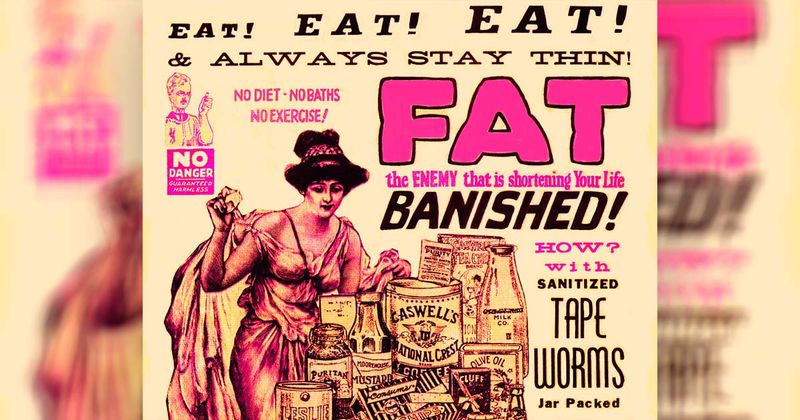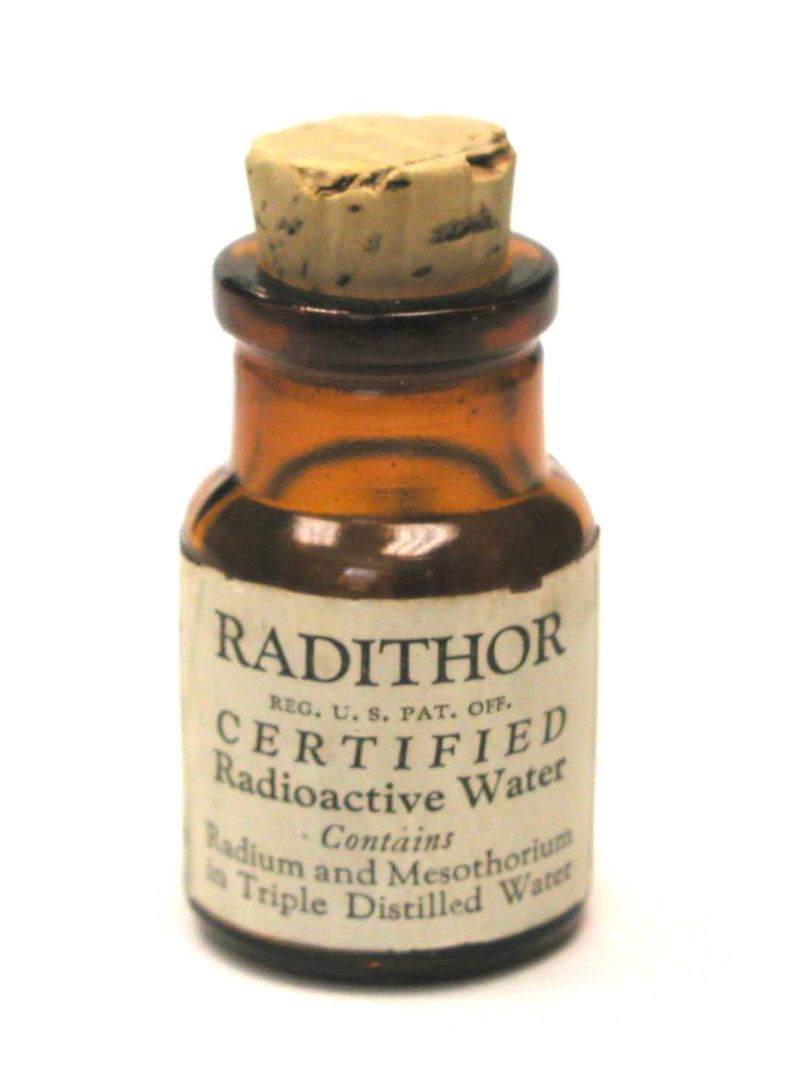Explore the peculiar world of dieting fads throughout history, where strange and sometimes dangerous practices were believed to aid in weight loss. From tapeworm pills to cotton ball consumption, these dieting trends reveal the lengths people have gone to achieve their ideal body. While some diets were simply bizarre, others posed serious health risks. Here’s a look at 15 of the most unusual dieting fads that have captured imaginations and waistlines over the years.
1. Victorian Tapeworm Diet (late 1800s–early 1900s)
In the Victorian era, a peculiar weight-loss fad emerged: the Tapeworm Diet. Imagine swallowing a pill with the promise of effortless weight loss, only to harbor a parasite in your gut. The concept was simple yet horrifying: tapeworms would consume the calories you ingested. Though historians debate its official use, anecdotal evidence suggests that people did experiment with this dangerous method. The idea of using a parasite to slim down is shocking, raising questions about the lengths people went for beauty in a time when medical knowledge was limited.
2. Cigarette Diet (1920s)
The 1920s ushered in the age of flappers, jazz, and the Cigarette Diet. Tobacco companies marketed smoking as a way to suppress appetite, with slogans like “Reach for a Lucky instead of a sweet.” This clever advertising tapped into the cultural obsession with slimming down, cleverly positioning smoking as a diet aid. While nicotine does reduce appetite, the health risks of smoking are significant. Obscured by glamour and marketing, this diet highlights a time when health was often sacrificed for aesthetics.
3. Cabbage Soup Diet (1950s, resurging every decade)
The Cabbage Soup Diet, a monotonous regimen, promises quick weight loss by consuming unlimited cabbage soup. Originating in the 1950s, it resurfaces every decade as a quick fix. While you may shed pounds, they mostly vanish in the form of water weight. This diet can lead to nutrient deficiencies, exhaustion, and social isolation due to its restrictive nature. The allure of rapid results often blinds followers to the unsustainable and unhealthy aspects of this fad, offering a glimpse into society’s perpetual pursuit of easy solutions.
4. Grapefruit Diet (1930s)
The Grapefruit Diet, also known as the “eighteen-day diet,” instructed weight-watchers to eat half a grapefruit before every meal. This 1930s plan promised significant weight loss on a mere 500-calorie daily intake, under the misguided belief that grapefruit enzymes melted fat. While the citrus fruit does offer some health benefits, the calorie restriction was dangerously low. The diet’s flawed foundation showcases how myths can drive dieting trends, reflecting society’s ongoing quest for a miracle food that will effortlessly melt away pounds.
5. Cotton Ball Diet (2013)
Emerging in 2013, the Cotton Ball Diet epitomizes extreme dieting measures. Followers swallowed cotton balls drenched in juice or smoothies to feel full without consuming calories. This dangerous practice led to numerous hospitalizations for intestinal blockages, emphasizing the lengths individuals might go to maintain an unrealistic body image. The diet’s bizarre rationale highlights how social media and modern pressures shape unusual eating behaviors, illustrating the extreme risks some are willing to undertake for perceived beauty standards.
6. Baby Food Diet (2010s)
The Baby Food Diet, popular in the 2010s, replaced adult meals with jars of baby purées. Consuming up to 14 jars a day, adherents aimed for quick weight loss. This trend risked severe nutrient imbalances, as baby food lacks the complexity needed for adult nutrition. While appealing for its simplicity, the diet’s inadequacy for adults underscores the misguided belief that childlike portions could provide enough sustenance. The fad reflects the desire for convenience over balanced nutrition, highlighting another chapter in the saga of unconventional diets.
7. HCG Diet (1950s onward)
The HCG Diet, originating in the 1950s, combined a 500-calorie intake with HCG hormone treatments. Believed to mobilize fat, HCG’s efficacy was never scientifically validated. Despite rigorous testing debunking its claims, the diet persisted, attracting those desperate for transformation. The practice of hormone injections alongside severe calorie restriction paints a picture of dieting extremism. This legacy of unproven methods and persistent beliefs offers insight into how desperation can fuel adherence to questionable health trends.
8. Radium “Water” Diet (1920s–30s)
In the 1920s, Radithor, a radioactive tonic, was marketed as an energy booster and weight-loss aid. Consumers like industrialist Eben Byers fell victim to its lethal radioactivity, leading to serious health consequences. This diet fad represents a period when the dangers of radioactivity were not fully understood, and the pursuit of vitality overshadowed safety. The tragic outcomes serve as a reminder of how the allure of miraculous cures can lead to dire consequences, reflecting humanity’s historical struggle with understanding science and health.
9. DNP Diet (1930s–today)
2,4-Dinitrophenol (DNP) pills, once hailed as miracle fat-burners, come with lethal risks. Available illegally online, these pills dangerously elevate body temperatures, risking cardiac arrest and death. Though the pills were banned, they still attract bodybuilders seeking rapid results. The diet’s history underscores the persistent lure of quick fixes despite known hazards. It serves as a stark reminder of the extreme and risky paths some take to achieve a desired physique, often prioritizing appearance over well-being.
10. Vinegar & Water Diet (1820s)
The Vinegar & Water Diet, championed by Romantic poet Lord Byron, involved drinking vinegar diluted with water, sometimes accompanied by biscuits and tea. Byron believed this concoction would burn fat, despite the practice being more likely to damage tooth enamel and the esophagus. This diet highlights the influence of celebrity endorsements and the historical obsession with achieving a slender figure. Byron’s eccentric methods reveal how personal habits and myths intertwined, showcasing an early example of dieting’s cultural impact.
11. Breatharianism/Inedia (historical to modern)
Breatharianism, the belief in living without food, claims that energy can be drawn from air or prana. This practice, rooted in spiritual traditions, has led to documented cases of starvation and death. Despite its fatal outcomes, some continue to pursue inedia, drawn by the promise of spiritual enlightenment. The extreme nature of this belief underscores the lengths individuals may go to transcend the physical body, reflecting dieting’s intersection with spirituality and the dangerous allure of radical ideas promising transcendence over physical needs.
12. Master Cleanse (aka Lemonade Diet, 1940s–present)
The Master Cleanse, also known as the Lemonade Diet, involves a ten-day fast of lemon-maple-cayenne drink, saltwater flushes, and laxative teas. Promising detoxification, this regimen offers little nutritional value and risks electrolyte imbalances. Despite warnings, it endures as a popular “detox” method. The cleanse’s persistence highlights the appeal of purging the body of impurities, though its scientific basis remains dubious. The diet reflects a broader cultural fixation on purification and quick fixes, often overshadowing balanced approaches to health.
13. Sleeping Beauty (Sedation) Diet (1970s)
The Sleeping Beauty Diet, prevalent in the 1970s, involved sedating oneself to bypass hunger pangs. Proponents believed more sleep equaled more weight loss, ignoring the lack of metabolic evidence. This method’s obvious risks include dependency on sedatives and neglect of proper nutrition. The diet illustrates the extreme lengths some went to avoid conscious eating, highlighting a period when convenience was prioritized over health. The fad underscores the enduring allure of effortless weight loss, often pursued without regard for the consequences.
14. Scarsdale Diet (1970s)
The Scarsdale Diet, popular in the 1970s, prescribed a two-week high-protein, low-carb regimen with under 1000 calories a day. Promising rapid weight loss, it led to nutrient deficiencies and rebound weight gain. Despite the risks, the diet’s promise of losing 20 pounds in two weeks captivated many. The plan reflects the era’s fascination with structured eating and quick results, often at the expense of long-term health. The legacy of the Scarsdale Diet serves as a cautionary tale of dieting’s cyclical nature and transient trends.
15. Twinkie Diet (2010)
The Twinkie Diet, conceptualized by nutrition professor Mark Haub, demonstrated that calorie control could lead to weight loss, even on a diet of Twinkies and junk food. Haub lost 27 pounds in two months, sparking debate over food quality versus quantity. While proving a point, the diet risked long-term health effects from processed foods. The experiment challenges conventional wisdom, highlighting the complex relationship between calories, nutrition, and health. It serves as a thought-provoking exploration of dieting principles, questioning what truly defines a “healthy” diet.















